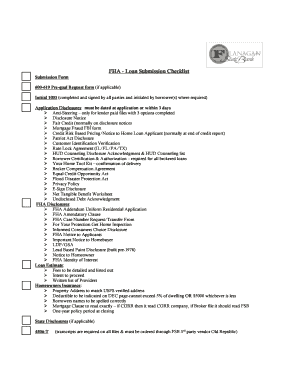Streamline Your FFL Paperwork Submission Process Easily

Understanding FFL Applications

Embarking on the journey to become a Federal Firearms Licensee (FFL) is a significant step in the firearms industry. It's crucial to grasp the intricacies of the process to ensure compliance with federal regulations. Applying for an FFL involves navigating a maze of paperwork, where understanding the types of licenses, eligibility criteria, and the step-by-step application process can be daunting but is essential for success.
The Basics of FFL Licenses

The Bureau of Alcohol, Tobacco, Firearms and Explosives (ATF) issues several types of FFLs. Here's a quick rundown:
- Type 01: For dealers in firearms other than destructive devices.
- Type 02: For pawnbrokers dealing in firearms.
- Type 03: Collectors of curios and relics.
- Type 06: For manufacturers of ammunition.
- Type 07: For manufacturers of firearms other than destructive devices.
- Type 08: For importers of firearms other than destructive devices.
- Type 09: For dealers in destructive devices.
- Type 10: For manufacturers of destructive devices.
- Type 11: For importers of destructive devices.
🔎 Note: The suitability of an FFL type depends on your business model, activities, and product types. Choosing the wrong type can lead to compliance issues.
Steps to Apply for an FFL

- Determine Your Eligibility: Ensure you meet the requirements such as age, citizenship, and criminal record checks.
- Choose the Right FFL Type: Based on your business operations, select the appropriate license type from the list above.
- Complete the Application: Fill out the ATF Form 7/7CR, providing all the necessary information accurately.
- Submit Fingerprints: Required for new applications or renewals, fingerprint cards must accompany the application.
- Pay the Application Fee: Non-refundable fees range from $30 to $200 depending on the type of FFL.
- Submit the Application Package: Ensure all forms, fees, and supporting documents are included when submitting to the ATF.
Preparing for Your Application

Before submitting your FFL application, here are some preparation tips to consider:
- Study the Guide: The ATF provides a helpful guide on FFL applications. Familiarize yourself with its content to avoid common pitfalls.
- Organize Documentation: Collect all necessary documents such as fingerprints, business plans, and business structure details in advance.
- Be Accurate: Any errors can lead to delays or even rejection. Double-check all information before sending.
- Get Legal Advice: Consult with an attorney specializing in firearms law to ensure your application is airtight.
What to Expect After Submission

After submitting your application, here's what you should anticipate:
- Processing Time: It can take anywhere from 60 to 90 days for the ATF to process an FFL application.
- Background Checks: You'll undergo background checks by the FBI to determine eligibility.
- Inspection: Once processed, expect an ATF agent to visit your premises for an on-site inspection to ensure compliance with regulations.
- Approval/Denial: You'll receive a letter indicating whether your application was approved or denied.
Understanding this process and preparing accordingly can help you navigate through it more efficiently, minimizing potential issues and delays.
Common Pitfalls to Avoid

Here are some common issues to steer clear of during your FFL application process:
- Incomplete Applications: Missing signatures or sections can result in delays or rejection.
- Insufficient Documentation: Not providing all required documents can slow down the process.
- Illegal Activities: Any history of prohibited activities, like a felony conviction, will disqualify you.
- Incorrect Fee Payments: Incorrect or insufficient fee payments will halt the application.
- Failure to Meet Zoning Requirements: Ensure your business location is compliant with local zoning laws.
⚠️ Note: Always read through all correspondence from the ATF carefully. They provide detailed instructions on how to address any issues or deficiencies in your application.
Table: Comparison of FFL Types

| FFL Type | Description | Typical Business Activities | Fee |
|---|---|---|---|
| Type 01 | Dealer in firearms other than destructive devices | Selling firearms, gunsmithing | $200 |
| Type 02 | Pawnbroker dealing in firearms | Pawning and selling firearms | $200 |
| Type 03 | Collector of curios and relics | Collecting antique firearms | $30 |
| Type 07 | Manufacturer of firearms | Manufacturing, gunsmithing | $150 |
| Type 08 | Importer of firearms | Importing firearms for sale or distribution | $150 |

In conclusion, obtaining an FFL is a meticulous process that requires thorough preparation, accurate documentation, and an understanding of the legal implications. By following the steps outlined above and avoiding common pitfalls, you can streamline your application journey, increasing your chances of a successful outcome. Remember, patience, persistence, and compliance with regulations are key to securing your Federal Firearms License.
How long does it take to get an FFL?

+
The processing time for an FFL application can range from 60 to 90 days. However, additional time might be required for background checks, inspections, and addressing any issues with the application.
Can I apply for an FFL if I have a criminal record?

+
A criminal record, especially felonies or violent misdemeanors, can disqualify you from obtaining an FFL. The ATF conducts background checks to ensure compliance with firearm laws.
What is the difference between a Class 1 and Class 2 FFL?

+
Class 1 FFL is for dealers in firearms, including pawnbrokers (Types 01 and 02). Class 2 FFL refers to special occupational taxpayers, which includes manufacturers and importers of firearms and destructive devices (Types 06, 07, 08, 09, 10, and 11).